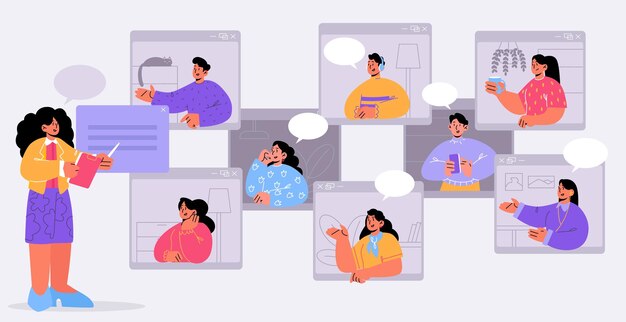Executive Summary
This project involved the design and delivery of a two-part seminar series aimed at equipping Engineering & Technology employees at a Fortune 300 company with foundational knowledge in diversity, equity, inclusion (DEI), accessibility, and user-centered design. Recognizing that these concepts were often celebrated symbolically but not deeply understood or applied, the sessions were built around real-world examples, familiar terminology, and multimodal content to support all learning styles.
The seminars covered key topics such as the differences between inclusive design and accessibility, types of visible and invisible disabilities, ethical design practices, and the limitations of designing for the “average user.” Sessions included hands-on activities, expert video content, and discussion periods to foster engagement and internalization.
Participant feedback indicated a significant shift in awareness and intent to apply inclusive principles to product development. The project not only filled a critical knowledge gap but also laid the groundwork for long-term cultural and design transformation within the organization. Recommendations included regular refresher training and integrating inclusion principles into ongoing workflows.
The Project
Project Scope
This initiative consisted of a two-part educational seminar grounded in anthropological frameworks, focused on making DEI and accessibility principles immediately actionable for Engineering & Technology teams. Each session included a mix of interactive activities, real-world examples, and discussion periods, structured to accommodate varied learning styles.
Part 1 Project Goals
- Define DEI in culturally relevant, workplace-specific terms
- Distinguish between accessibility and inclusive design
- Introduce the spectrum of disabilities, with a focus on invisible impairments
Part 2 Project Goals
- Revisit and reinforce Part 1 concepts
- Introduce user-centered design as a collaborative and ethical practice
- Challenge the myth of the “average user”
- Provide practical frameworks for inclusive research and development
Key stakeholders
- Engineering & Technology employee accessibility team
- Managers, directors, and technical contributors responsible for consumer-facing design
Key deliverables
Two interactive seminars supported by:
- Slide presentations tailored to visual learners
- Expert video segments for auditory reinforcement
- Hands-on activities for kinesthetic engagement
- Guided discussions and real-life scenarios to foster critical reflection
Timeline
Each seminar was developed within one week. Sessions were held one week apart to allow time for internalization and reflection
Research Approach and Chronology
Defining the Research Questions
While employees are aware of the DEI team and the organization “celebrates” DEI and accessibility for one month each year, I wanted to ensure that the employees actively understood the concepts surrounding DEI and accessibility, particularly since they were in charge of researching and design products, software, and services that were used by thousands of consumers.
- What do Engineering & Technology professionals currently understand about DEI and accessibility as applied to design?
- What tools and frameworks do they need to integrate these values into their product workflows?
My Role
As the project lead, I conducted the stakeholder research, designed the seminar content, facilitated both sessions, and synthesized post-seminar feedback. My work bridged the gap between organizational values and everyday technical decision-making by drawing on ethnographic insight, workplace anthropology, and inclusive pedagogy.
Methodologies Utilized
Group discussions with the accessibility team to define learning objectives
- One-on-one interviews with designers, developers, and researchers to assess knowledge gaps
- Iterative curriculum development based on observed cultural and cognitive patterns within the E&T department Assumptions and constraints
The curriculum was built on the assumption that most participants had limited prior exposure to inclusive design principles. Given this, sessions were intentionally kept short, paced, and focused to maximize engagement and prevent overload.
Risk and mitigation strategies Recognizing the risk of perceived condescension—especially among highly skilled technical staff—I framed content as collaborative exploration rather than correction. Tone, language, and examples were carefully tailored to validate existing expertise while introducing new, socially grounded perspectives.
Outcome
Key Insights
- E&T professionals lacked a working understanding of how DEI and accessibility principles apply to design processes
- Participants were eager to create more inclusive, accessible products when given clear frameworks
- Even self-identified advocates on the accessibility team were unfamiliar with key concepts such as invisible disabilities and inclusive collaboration
Recommendations
- Offer annual refresher trainings, strategically timed outside DEI awareness months to emphasize year-round relevance
- Integrate inclusive design checkpoints into product development life cycles
- Foster interdisciplinary partnerships between technologists and social scientists to sustain momentum
